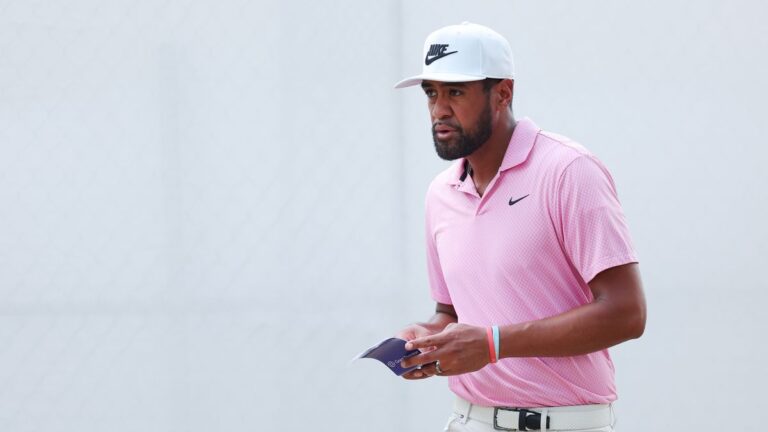How Tiger Woods and Nike’s Epic Partnership Fell Apart
Tiger Woods’ unexpected departure from Nike, a brand synonymous with his illustrious golf career, unfolded on April 3, 2022, when he sported FootJoy shoes at Augusta National Golf Club. Jordan Rogers, a former marketing director at Nike, viewed this move as sacrilege, signaling the unraveling of the iconic partnership. The culmination of this split was…
Tiger Woods’ unexpected departure from Nike, a brand synonymous with his illustrious golf career, unfolded on April 3, 2022, when he sported FootJoy shoes at Augusta National Golf Club. Jordan Rogers, a former marketing director at Nike, viewed this move as sacrilege, signaling the unraveling of the iconic partnership.
The culmination of this split was confirmed on January 8, 2024, leaving fans to reflect on the journey that led from Woods’ triumphant 2013 PGA Tour season – marked by a historic 10-year, $200 million extension with Nike – to the surprising separation.
In 2012, as Woods regained his form, Nike sought the next face of its golf division, signing promising talents like Rory McIlroy, seen as the heir to Tiger’s dominance. A short film named “Ripple” depicted a symbolic passing of the torch between Tiger and Rory, prompting speculation about Nike’s shift in focus.
Despite Woods’ resurgence in 2012 and 2013, pundits predicted his decline, accentuated by winless major seasons and injuries. Nike’s simultaneous support of Woods and endorsement of McIlroy as the future raised questions. Rogers speculated that Tiger, fueled by a competitor’s drive, resented Nike’s attempt to transition to Rory.
The narrative deepened with Woods facing external criticism, notably losing his cover spot on EA Sports’ golf video game to McIlroy. Nike’s attempt to mold McIlroy as the next golf icon alongside the fading Tiger further fueled Woods’ motivation.
Yet, the story isn’t one-sided. Rogers contends that Tiger, ideally, should have remained a lifelong Nike athlete. However, projecting into 2024, questions arose about sustaining an athlete nearing the end of his career, particularly one with Tiger’s reserved personality and off-course controversies.
While Michael Jordan transformed into a stand-alone brand for Nike, the TW brand failed to resonate similarly. Tiger’s introverted nature, controversies, and resistance to wearing Nike shoes strained the marketing rationale. Despite Nike’s attempt to meet Woods’ needs post-surgery, the decision to switch to FootJoy was more complex than solely injury-driven.
Even after 27 years with Nike, Woods’ departure wasn’t solely out of spite, according to Rogers. A less quantifiable factor, the neurosis of a finely tuned athlete, played a role. For Woods, even the slightest difference in equipment could be detected, contributing to the end of a legendary partnership that defined an era in golf.
As fans celebrate Tiger’s return to the course, the separation from Nike remains a significant chapter in the narrative of a sporting icon.






